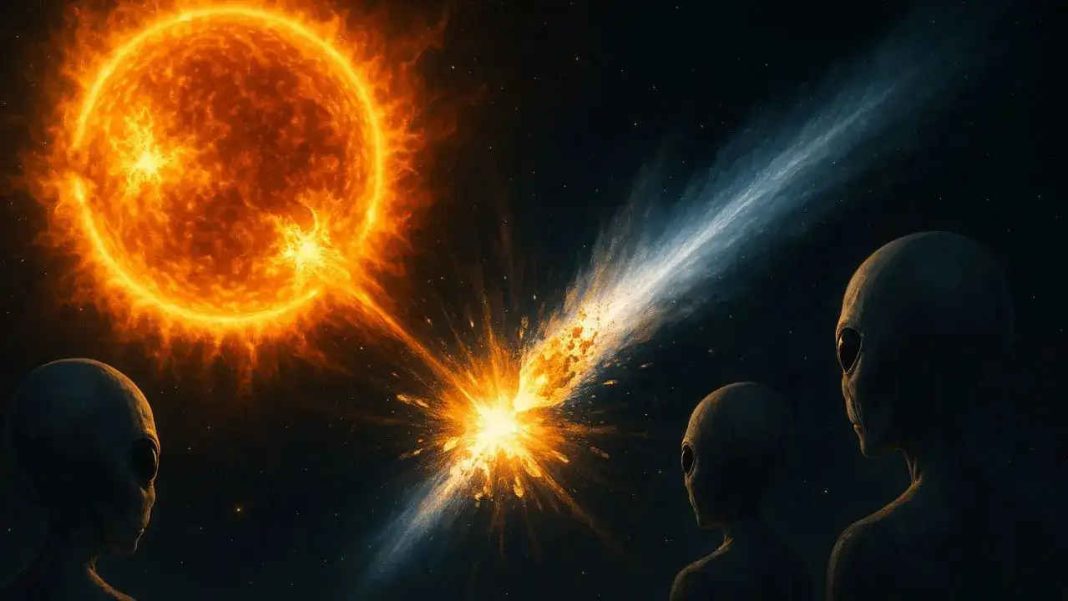Interstellar Object 3I/ATLAS Shows Signs of Explosion After Solar Encounter
Astronomers have detected bizarre twin tails and sudden brightening in interstellar object 3I/ATLAS following its close encounter with the Sun, suggesting the object may have exploded into multiple pieces due to extreme solar heating.
Key Takeaways
- 3I/ATLAS developed twin tails stretching millions of kilometers after solar approach
- Mass loss increased dramatically from 150 kg/s to 2 million kg/s
- Scientists suspect the object fragmented into at least 16 pieces
- Hubble and James Webb telescopes will determine final fate
Unusual Post-Encounter Behavior
Recent images of 3I/ATLAS reveal an unusual brightening and extended trails of gas and dust, raising fundamental questions about the object’s nature. The dramatic brightening during its closest solar approach indicates rapid heating and intensive material loss.
Harvard astrophysicist Avi Loeb explained that such breakup could result from the Sun’s intense heat, with brightening occurring as more surface area became exposed during the fragmentation process.
The Twin Tail Phenomenon
British astronomers Michael Buechner and Frank Niebling captured images showing 3I/ATLAS developed a massive “anti-tail” pointing toward the Sun alongside another extensive smoky trail. One tail extends approximately 1 million kilometers sunward, while the opposite trail spans nearly 3 million kilometers.
Loeb notes that for normal comets, gas typically flows at 0.4 kilometers per second. If 3I/ATLAS follows this pattern, its gas jets must have been active for one to three months to produce such extensive tails.
Size Discrepancy and Solar Absorption
Researchers discovered 3I/ATLAS absorbs significantly more sunlight than expected for its estimated size. With the Sun providing about 700 joules per square meter every second, the object would require a surface area exceeding 1,600 square kilometers—equivalent to a sphere roughly 23 kilometers wide.
This measurement suggests 3I/ATLAS is nearly four times larger than initial estimates indicated.
The Explosion Theory
The comet’s mass loss rate skyrocketed from approximately 150 kilograms per second to nearly 2 million kilograms per second between August and its solar closest approach. Loeb believes the most plausible explanation is fragmentation into at least 16 pieces.
“This means 3I/ATLAS exploded near the Sun, and we are seeing the aftereffects,” Loeb stated.
Alternative Possibilities
Loeb cautions that if 3I/ATLAS doesn’t disintegrate as expected, it might not be a natural comet at all. He has suggested it could represent technological debris, possibly even an alien spacecraft.
The astrophysicist adds that if the object employed thrusters, it would require substantially less fuel to generate observed jets, particularly with higher exhaust velocities that would make fuel consumption only a minor fraction of total spacecraft mass.
Future Observations
As 3I/ATLAS approaches Earth on December 19 before its Jupiter encounter in March 2026, astronomers worldwide are monitoring its trajectory. Upcoming observations using the and will definitively determine whether the object has fragmented or remains intact, potentially challenging existing astronomical theories about interstellar visitors.







